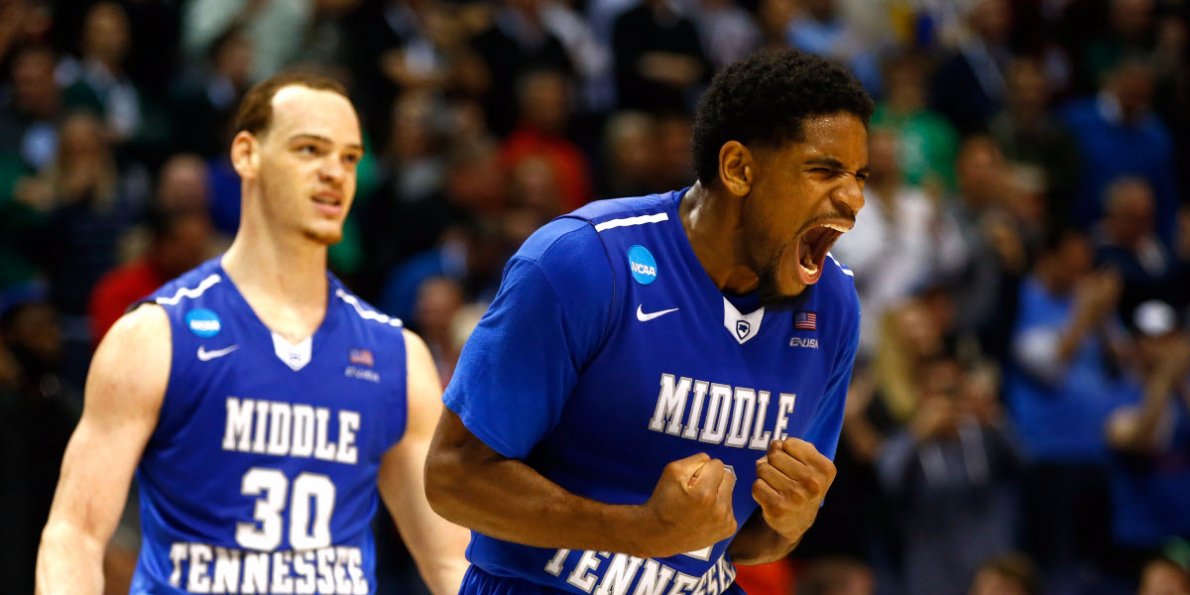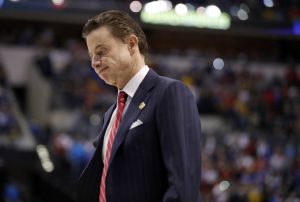The NCAA Tournament always brings craziness to the sports world, and this year has been no exception. Ten first round wins by double-digit seeds is a new tournament record, and thirteen first round upsets (games where the lower seed won) ties the highest number since the tournament field was expanded to sixty-four teams in 1985. Add those feats to the eight notably insane games from the first weekend, consisting of three buzzer beaters (one from half-court), about four other game-winning last second baskets, and two massive comeback wins from double-digit deficits with less than two minutes left and it’s easy to see why many are labeling this as one of the best first weekends ever.
There’s a perception that the NCAA Tournament is great because of early round upsets, which is certainly partly true; upsets bring excitement and intrigue to March. Look at Middle Tennessee State, a fifteen seed that took out Michigan State, a two seed, in the first round. Five Thirty-Eight, a sports analytics website, called Michigan State’s loss the third most improbable upset in tournament history, giving them only a 5.5% chance of losing. 97% of entries in in ESPN’s Tournament Challenge had Michigan State winning against Middle Tennessee State, and Five Thirty-Eight’s pre-tournament prediction gave Michigan State a 9% chance of winning the title, the fourth-highest out of this year’s field. So, this really was a memorable, historical upset.
Sure, the games so far have been incredible, and this year has certainly seen a number of entertaining upsets, but do the upsets really matter in the longer-term tournament outlook? Just as many other teams before them, Middle Tennessee’s glory was short-lived, as they got thoroughly shredded in the Round of 32 by a mediocre Syracuse team, 75-50. Mid-major first round winners Yale, Northern Iowa, VCU, Wichita State, Hawaii, Stephen F. Austin, and Arkansas-Little Rock also lost in their second round matchups. Excluding Michigan State, many pre-tournament favorites are still poised to make deep runs, despite the so-called “chaos” in this year’s most upset-filled bracket ever. Out of sweet sixteen teams, Gonzaga is the only non-Power conference team remaining, and they barely count because their recent success makes it difficult to argue that they possess any characteristics of a true mid-major. Of Five Thirty-Eight’s sixteen teams given the best chances to win the title pre-tournament, eleven actually made the sweet sixteen. Michigan State (9% chance of winning the title) is the highest rated casualty, and Kentucky (4%), West Virginia (3%), Purdue (3%), Arizona (2%), and Xavier (2%) are the others. Favorite Kansas (19%) and contenders North Carolina (15%), Virginia (10%), and Oklahoma (7%) are just a few of the remaining teams. Even with all those memorable first round upsets, no true mid-major underdogs were able to advance to the next round.
This pattern isn’t just an anomaly for this season, either. Only once has a fifteen seed advanced past the round of thirty-two, only three times has a fourteen seed made the sweet sixteen, and there are only three instances of double-digit seeds making the Final Four ever. While upsets undoubtedly do spice up the first and second rounds, rarely do the underdogs succeed enough to make the second weekend, infrequently do they make the Final Four, and never have they won the whole thing. The lowest seed to win the national title was an eight seed (Villanova, 1985), so a double-digit seed has never won the national championship. Blue-blood, power conference programs always prevail at the end of the day, no matter how many upsets occur in the early rounds. Taking a look at the past NCAA Tournament champions, it’s even more obvious that the historically elite teams always end up on top. With the exception of a few formerly successful programs that aren’t as relevant now (Arkansas 1994, UNLV 1990, Marquette 1977), I had to go all the way back to UTEP in 1966, a full fifty years ago, to find the last national championship won by a team I can certainly say is not a blue-blood, and even they were ranked third in the AP Poll at the time, and were thus definitely not an upset, (also, that team was historically significant for other extremely important reasons.)
As Kansas, North Carolina, Virginia, Oklahoma, or some other top team cuts down the nets in Houston this year, one of the best teams will once again prevail. Of course, first and second round upsets have provided great intrigue and excitement to the first weekend of the tournament. Rarely does first round success for the underdog translate into a real run at the title, and the blue-blood programs will continue to win when it really matters. When a true underdog upsets its way to the national title game? Then I’ll be thoroughly impressed.





WAY TO LEAVE VILLANOVA OUT OF YOUR LIST OF TOP TEAMS NERD.